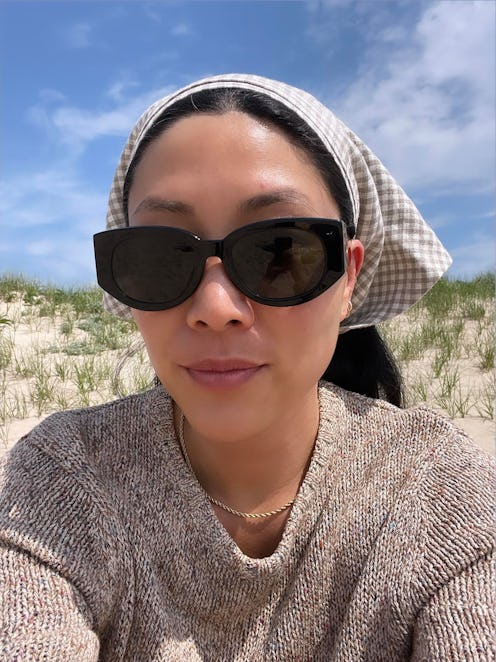(Beauty Report Card)
The 3 Types Of Sunscreens That Simplified My Skin Care Routine
No more excuses.

I developed an interest in skin care at an early age. From the first bottle of Oil Of Olay face moisturizer that I bought at the age of eight to my obsession with Korean skin care products during my pre-teens, I was on a good track when it came to taking care of my dermis. Yet, somewhere along the way, right before college, I became enamored with looking bronze, all the time. Winter or summer, it didn’t matter — I made sure I maintained the shade with my biweekly visits to the tanning salon. Sunscreens and sunblocks were not even considered when I was outdoors, and although I should have learned very well then the damage that I caused to the largest organ of my body, I am just getting into a consistent routine of implementing sun protection.
I really have no excuse. The beauty industry offers a wide assortment of sunscreens and sunblocks that come in a variety of form, texture, and Sun Protection Factor (SPF). Therefore, I should easily be able to implement them into my skin care routine. But first, I had to determine which type I preferred — creams, lotions, gels or sprays — as well as the amount of SPF considering my lifestyle. NY-based, board-certified dermatologist and skin cancer specialist Orit Markowitz, MD suggests to me that “The most effective sunscreen vehicle would be a mineral sunscreen lotion with an SPF 30-70. A lotion tends to stick to the skin and last longer than something that comes in a spray format. Additionally, a mineral sunscreen is going to reflect the UV light and provide the longest-lasting protection as it’s less likely to absorb or easily be wiped off with sweat.” Other variables to look out for according to Dr. Markowitz is that it’s water-resistant, includes UVA and UVB protection (broad spectrum), a minimum of spf 30, with the “sweet spot between 30-70,” and ingredients like zinc, iron or titanium oxides, which are non-irritating physical blockers.
Another element that is important for me is convenience. I looked for products that were multi-functional as it would affect the likelihood of whether I would use the sunscreen or not. By using a product such as a tinted serum with SPF, I reduced the steps to my skin care (and makeup) routine, which in the summer I like to keep to a minimum.
But, unlike other skin care products, which I only use morning and night, sunscreen requires reapplication at least every two hours. Considering that, I searched for one that is easily applicable, transportable, and won’t smear the makeup I already have on, as well as one with an SPF less than 70 as Dr. Markowitz notes that SPF “have diminishing returns once they pass 70 because of the chemical ingredients and compromise in vehicles that get sunscreens to pass that number.”
I went on the hunt for the best sunscreens and sunblocks for my skin (dry in the winter, normal to combination the rest of the year) for under makeup, as makeup, and easy reapplication. If you’re in the market and have trouble finding the right one for you, check out my picks below as a starting point — there a so many great ones to choose from. There really is no more excuse not to protect your skin.
We at TZR only include products that have been independently selected by our editors. We may receive a portion of sales if you purchase a product through a link in this article.
Sunscreen: Best Under Makeup
Sunscreen: Best As Makeup
Sunscreen: Best Easy Reapplication
This article was originally published on